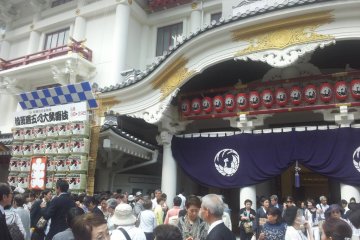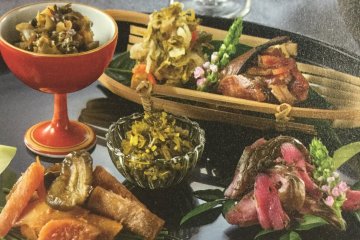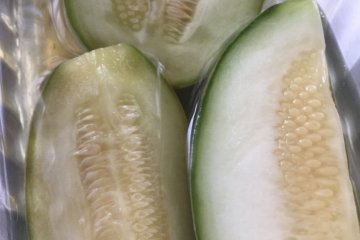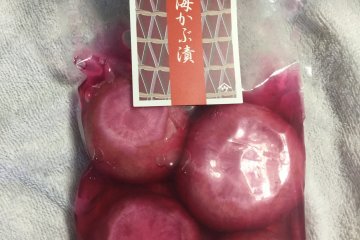There is much much more to tsukemono or Japanese pickles than the ubiquitous takuan (the brownish white or florescent yellow sun dried daikon) that seem to accompany any meal.
The various regions of Japan boast of pickles that are unique to the local climate. There are as many types of pickles as they are makers, each showcasing traditional production methods that result in traditional tastes, or innovative methods that appeal to modern tastes. The offerings vary according to the seasons as well. The very posh Ginza Yamau pickle shop is where you can sample these delicious pickle stories.
The shop itself is worth a visit. Completed in 2017, the building features a mosaic pattern reminiscent of traditional kumiko pattern that dates back to the Edo period. There are at least 50 different pickles, but offerings change with the seasons and some are only available in limited quantities.

One such pickle is the Shizuoka melon pickle, only available from April to August. I have had pickled apples from Nishiri, but melon is one of those fruits that I cannot imagine being pickled. These melons are picked before ripening and pickled in soy sauce. The result is a pickle that is crisp like cucumbers with a refreshing taste and a hint of melon scent. It is a wonderful addition to your table, guaranteed to be a conversation starter.

Another seasonal pickle is the Atsumi turnip, usually available from November to March, depending on the growing conditions of the vegetables. These turnips have been cultivated in the Shonai region of Yamagata Prefecture for over 400 years. This variety of turnip has a moderately spicy taste and naturally rich in umami. The outer skin is purple and the flesh is white but in the soaking process, the pickle acquires a bright reddish purple hue. This pickle has a complex combination of sweet, sour, and slightly bitter taste that will leave you wanting more.











